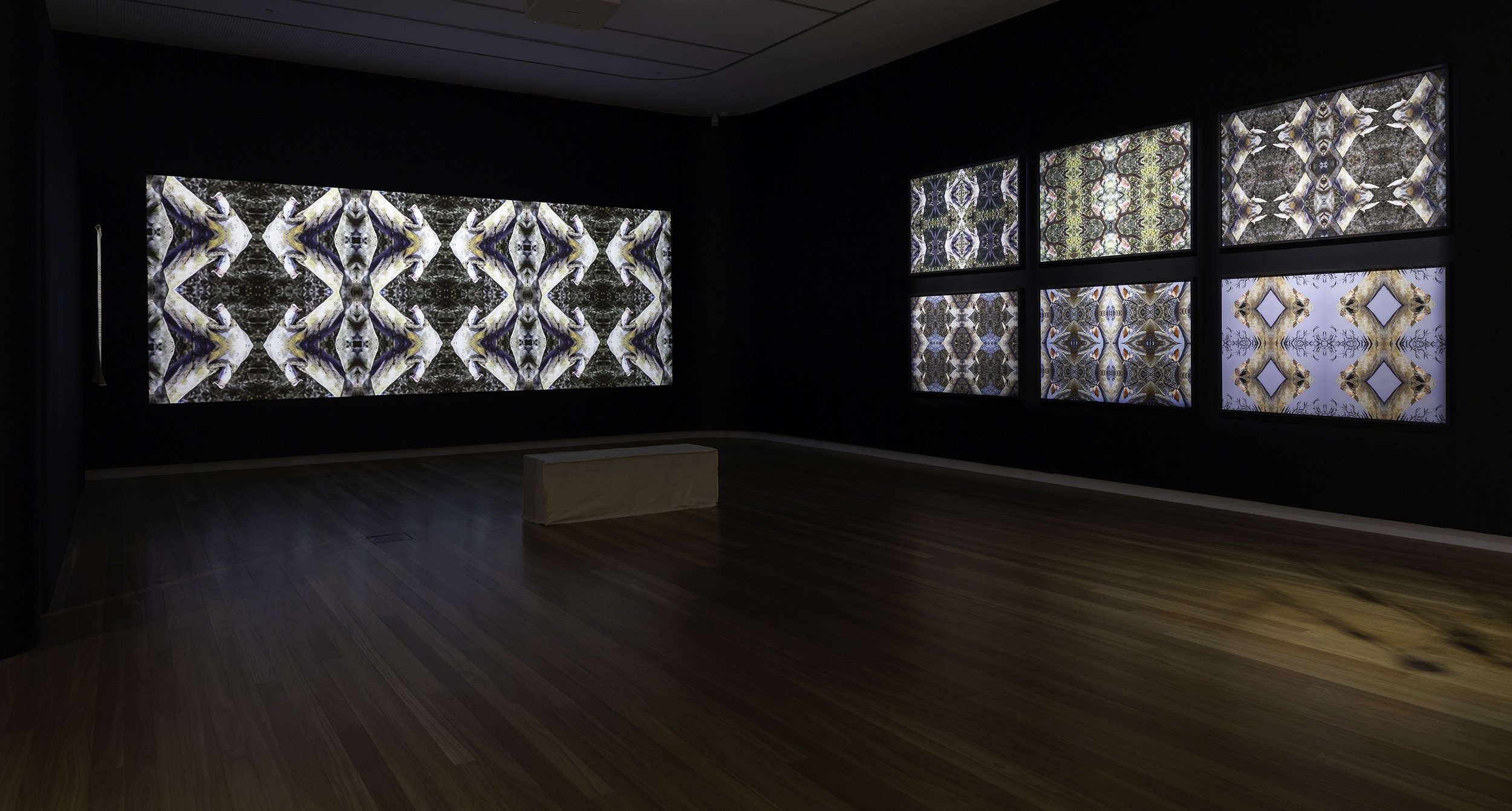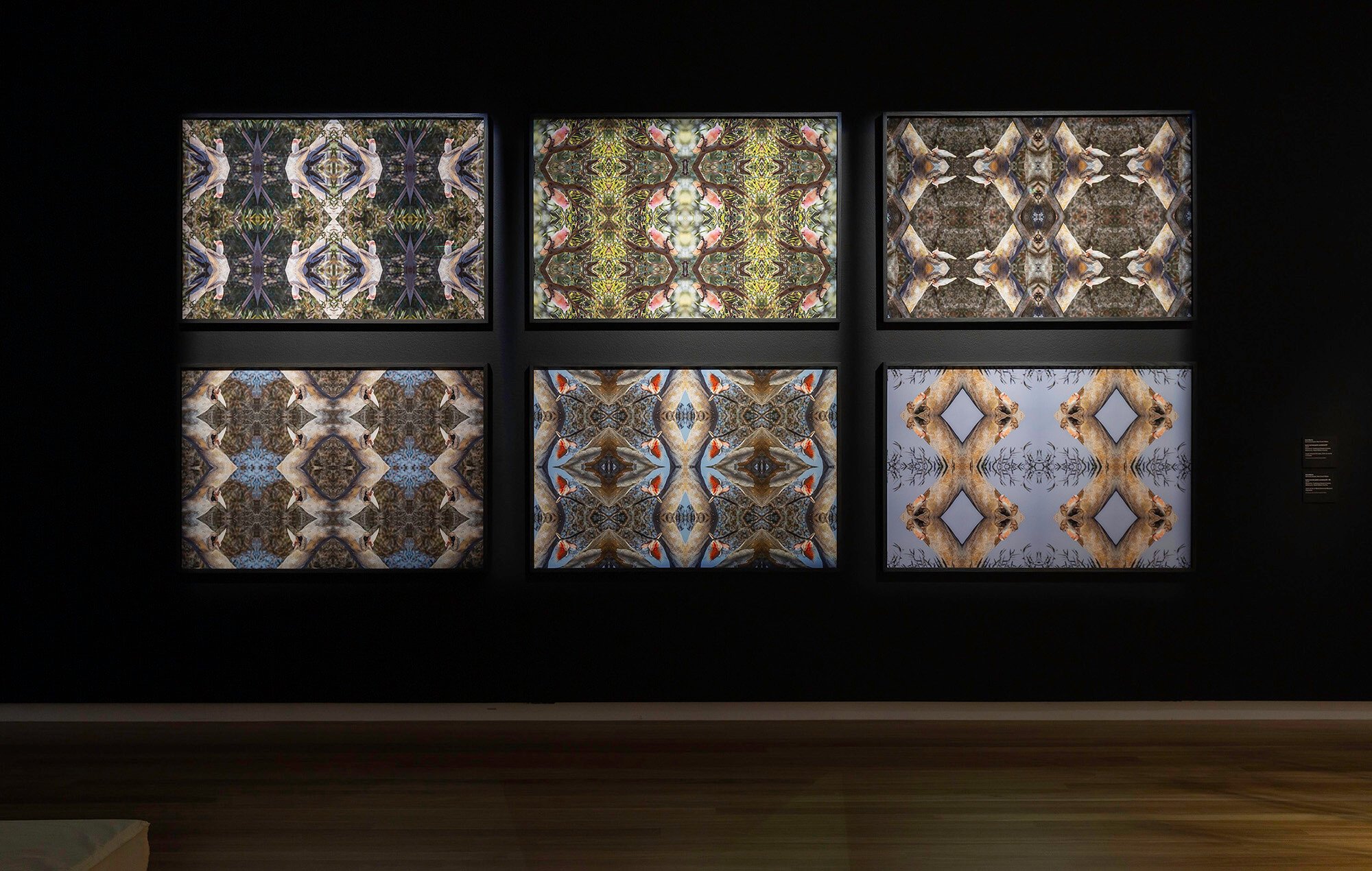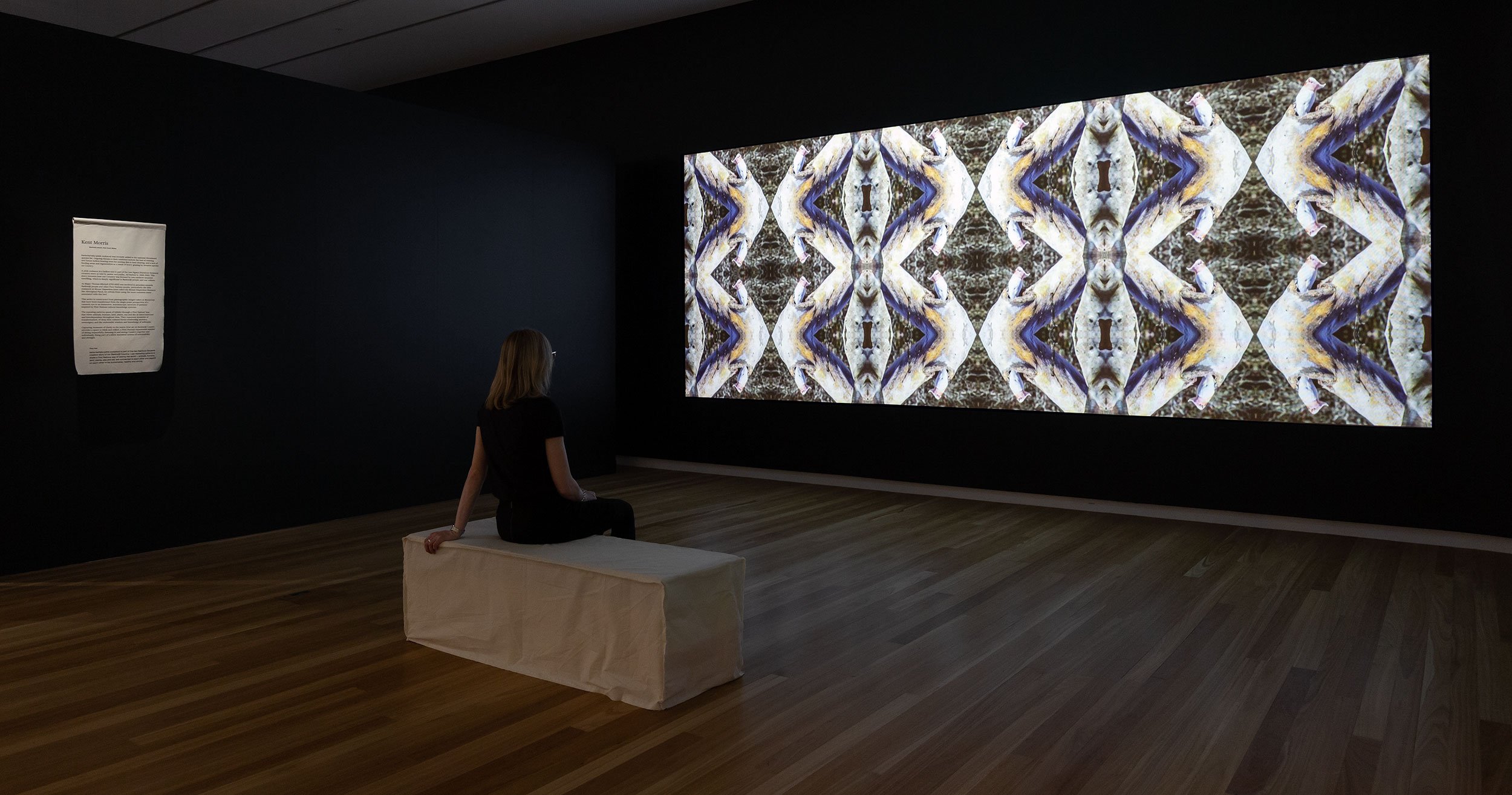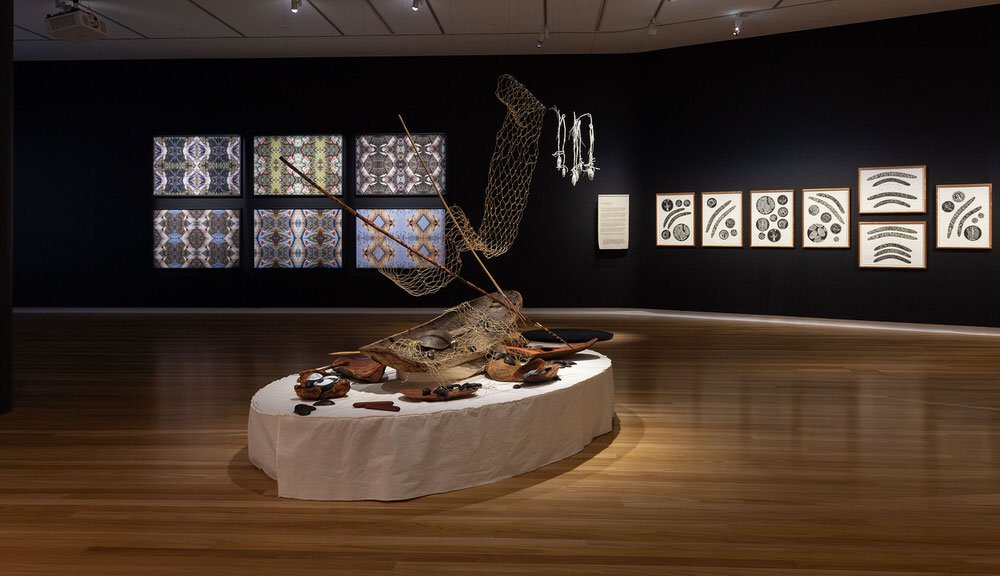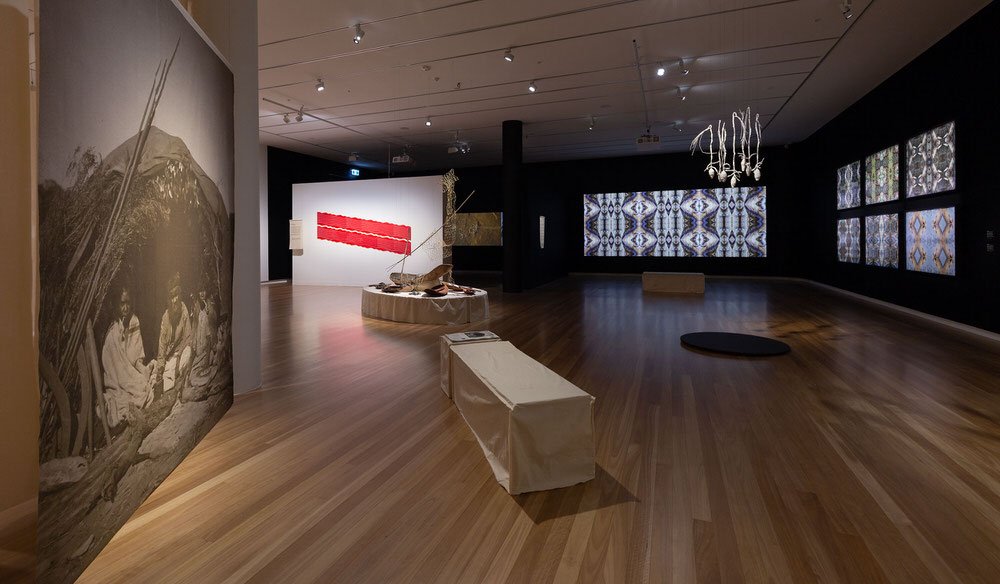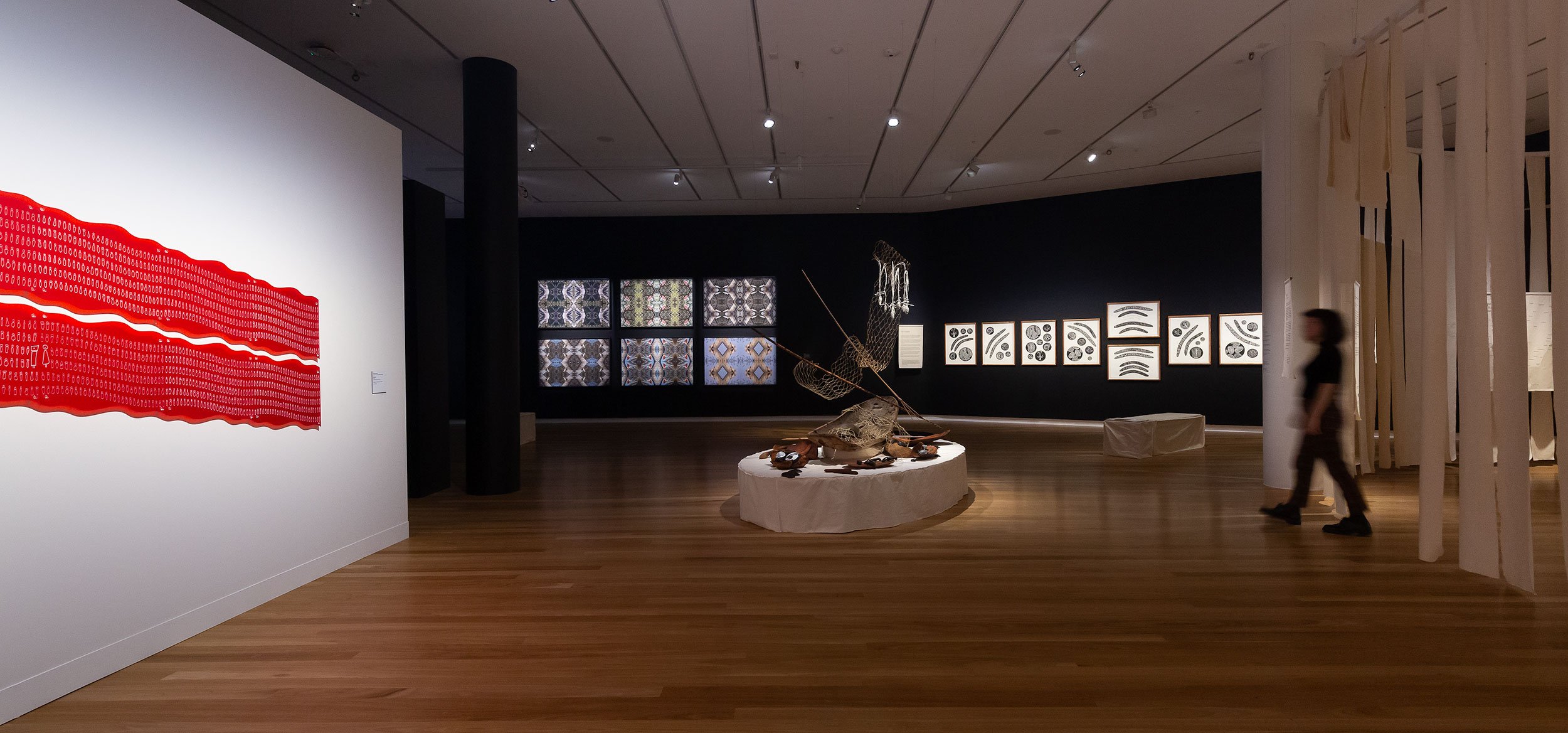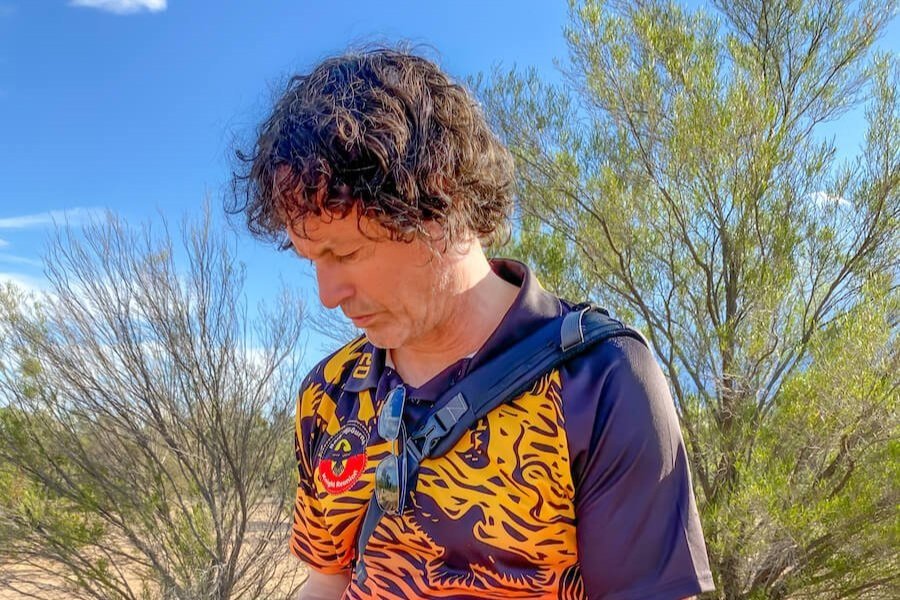Kent Morris
Barkindji people, New South Wales
karta-kartaka (pink cockatoo) was recently added to the national threatened species list. Ongoing threats to their existence include the loss of existing and future hollow-bearing trees for nesting due to land clearing, and a lack of feeding areas and regeneration as a result of heavy grazing by invasive species on Country.
A pink cockatoo in a hollow tree is part of the two Ngatyi (Rainbow Serpents) creation story as told by senior storyteller, Alf Barlow (c. 1888–1961). This story recounts how our Country was formed by two rainbow serpents travelling, which is deeply significant to Barkindji people and our culture.
As Major Thomas Mitchell (1792–1855) was involved in atrocities towards Barkindji people and other First Nations people, particularly the 1836 massacre at Mount Dispersion (now called the Mount Dispersion Massacre Site Aboriginal Place), we refrain from using the more common name associated with this bird.
This series is constructed from photographic images taken at Mutawintji that have been transformed from the single-point perspective of a camera’s eye to an immersive, kaleidoscopic network of patterns inspired by First Nations cultural knowledge systems.
The repeating patterns speak of infinity through a First Nations’ lens that views animals, humans, land, plants, sea and sky as interconnected and interdependent throughout time. They represent moments of transformation, of deep time cultural forms reinforcing ancestry, sovereignty and the undeniable wisdom and knowledge of millennia.
Capturing moments of clarity in the warm clear air on Barkindji Country provides a space to think and reflect, a First Nations experiential mindset of sitting respectfully, listening to and seeing Country together and individually. Being part of a silent Ancestral system of sustainability and strength.
Easy read
karta-kartaka (pink cockatoo) is part of the two Rainbow Serpents creation story of our Barkindji Country. I use repeating patterns to share a First Nations way of seeing the world — animals, humans, land, plants, sea and sky are connected to each other and depend on each other to be sustainable, healthy and strong.
-
A Barkindji man living on Yalukit Willam Country in Naarm/Melbourne, Kent Morris graduated from the Victorian College of the Arts and is an alumnus of the National Gallery of Australia’s Wesfarmers Indigenous Leadership Program. Central themes in his art practice are the connections between contemporary Indigenous experience and contemporary cultural practices and their continuation and evolution.
By reconstructing the environment through a First Nations lens, Morris reveals the continuing presence and patterns of Aboriginal history, culture and knowledge in the contemporary Australian landscape, despite ongoing interventions in the physical and political environments.
Through a variety of digital processes, Kent engages audiences by manipulating technology and nature into new forms that reflect Indigenous knowledge systems reshaping western frameworks, exploring complex histories and First Nations cultural continuity since time immemorial.
One of the central motivations for Kent’s work is to provide a dedicated and considered public space for the exchange of stories, histories, images and insights and to give visual representation to that which is often unseen. His art practice explores identity, connection to place and the continuing evolution of cultural practices whilst engaging audiences to question long held frames of reference.
Kent Morris is represented by Vivien Anderson Gallery.
Kent Morris at Kinchega, 2022
Photo: Nici Cumpston
Kent Morris
Barkindji people, New South Wales
Karta-kartaka (Pink Cockatoo) #1 – #6
2023
Mutawintji
Inkjet print on Moab Somerset Museum Rag paper
(1-6) 100cm x 150cm (each)
Courtesy of the artist and Vivien Anderson Gallery
Karta-kartaka (Pink Cockatoo) #7
2023
Mutawintji
Single channel HD video, 24:9, colour, no sound
3 minutes
All works courtesy of the artist and Vivien Anderson Gallery.
Nici Cumpston, Zena Cumpston, David Doyle, Kent Morris, Adrianne Semmens, Raymond Zada
Barkandji/Barkindji/Malyangapa people, New South Wales
nets
2023
Broken Hill, Wilyakali Country
Adelaide, Kaurna Country
Melbourne, Wurundjeri Country
spiny-headed sedge (Cyperus gymnocaulos)
(1-2) 50.0 x 300.0 cm (each) (variable)
Courtesy the artists.
Photography by Christian Capurro at Bunjil Place Gallery, 2023.
